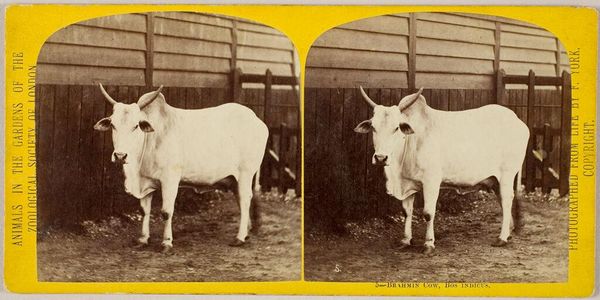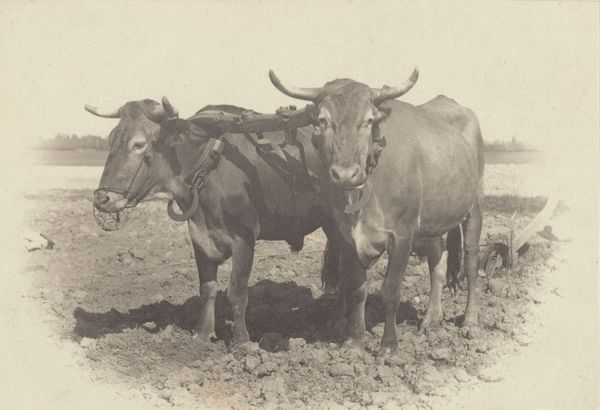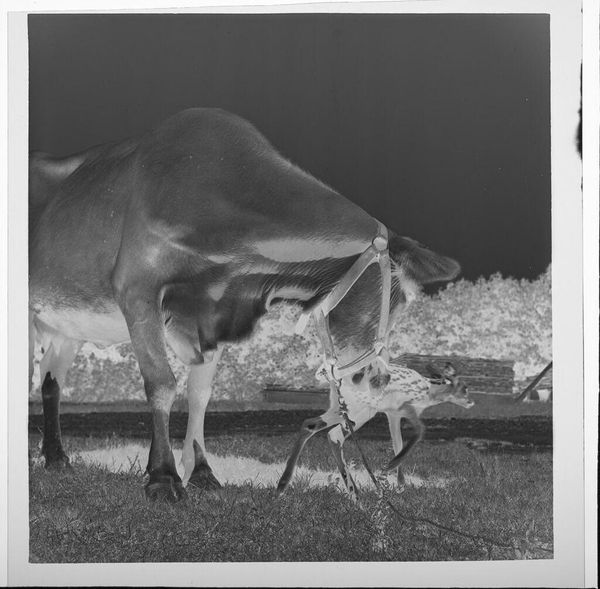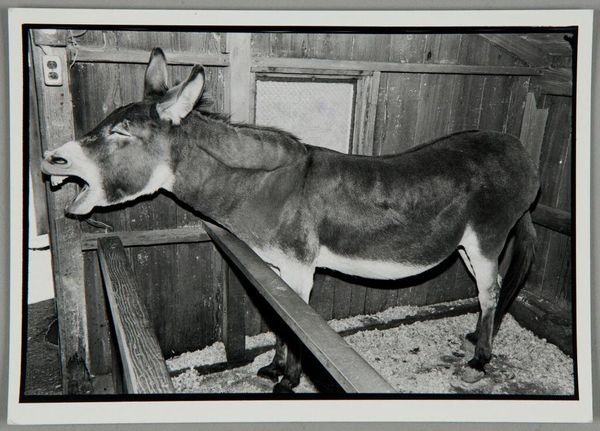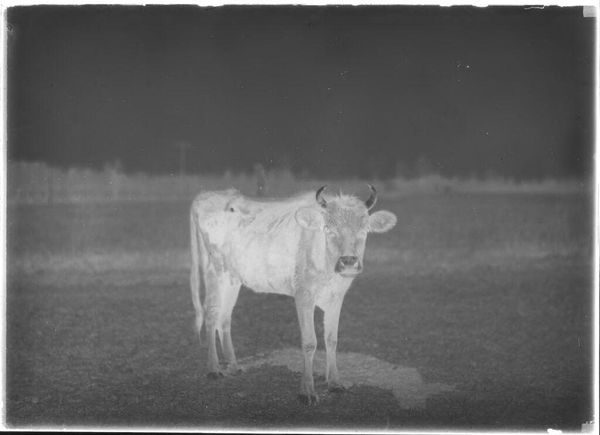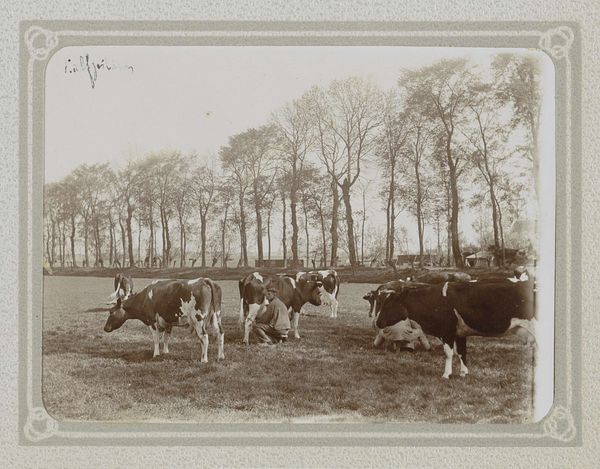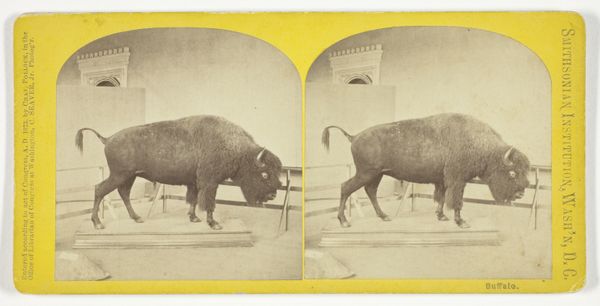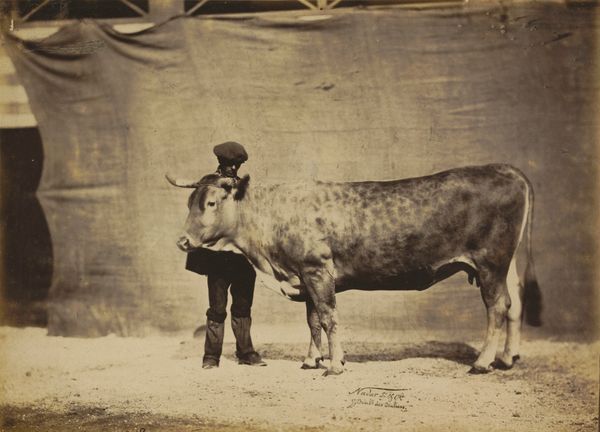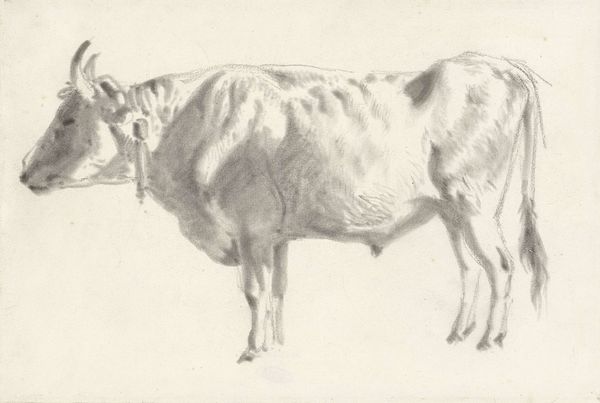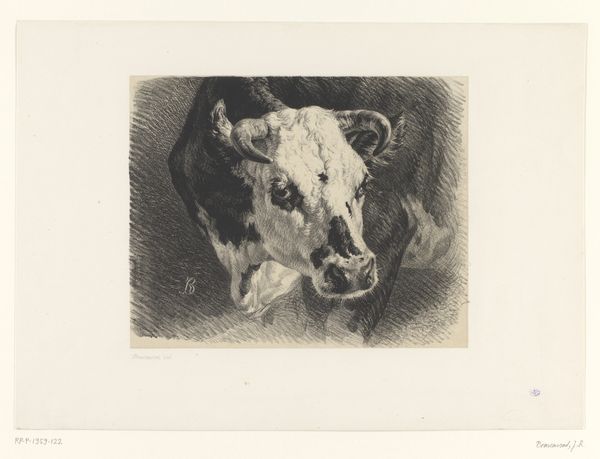
photography, gelatin-silver-print
#
animal
#
landscape
#
photography
#
gelatin-silver-print
#
realism
Dimensions: height 76 mm, width 152 mm
Copyright: Rijks Museum: Open Domain
Editor: This photograph, titled "Banteng stier met grote hoorns" by Neville Keasberry, dates to sometime between 1900 and 1935. It's a gelatin-silver print, which gives it a silvery, almost metallic sheen. It looks like it depicts a Banteng bull at a zoo. What can you tell me about this photograph? Curator: Focusing on the materiality, we must examine what it means to capture this creature within the constraints of gelatin-silver print technology, the labor involved in staging and producing this image, and the systems of display through which it was and continues to be consumed. The photograph does not simply record a bull. The silver gelatin print becomes an object reflecting colonial era’s interest in exoticizing and classifying the natural world, and that relates to how photographic technology was evolving for documentation. What systems do you observe beyond this single capture of a bull in its stall? Editor: The “Stereoskopische Fotografie” text printed along the border indicates it was likely made as a stereo image, for viewing with a stereoscope. Would that heighten the exotic appeal of the bull when experienced as three-dimensional? Curator: Precisely! Consider the consumption of such images: viewed through a stereoscope, emphasizing the animal's otherness for primarily Western audiences. Note the built enclosure too – a fabricated habitat. How does the artist highlight not the freedom of an animal but its manufactured landscape through gelatin and silver? Editor: That reframing changes everything. I wasn't even thinking about that. Thanks, I’ll never be able to look at a picture of an animal without questioning its context again. Curator: Exactly! The value doesn't lie solely in representation, but also the historical context. Let us think about it materially; it speaks of consumption and fabrication even in a seemingly simple photographic image.
Comments
No comments
Be the first to comment and join the conversation on the ultimate creative platform.

